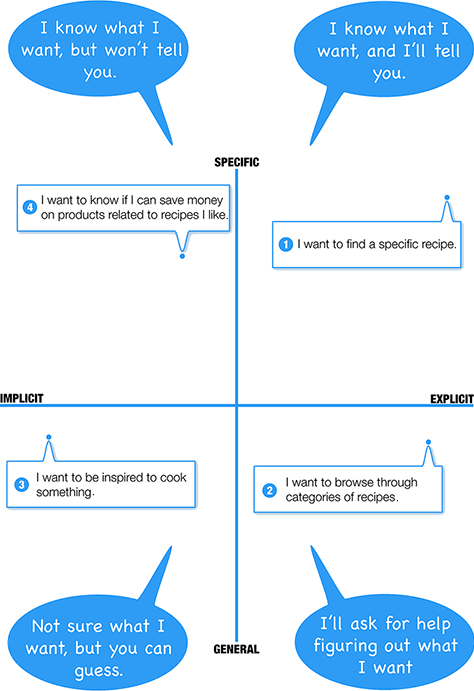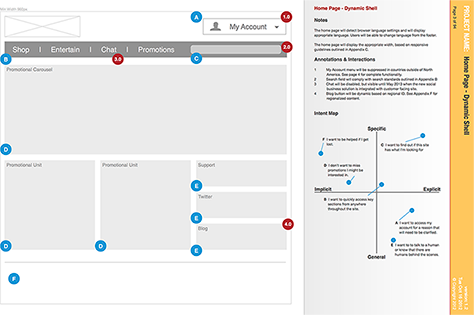Classifying User Intent
Some level of user research is necessary to define the various needs that any system must accommodate—especially a complex system. This type of research relies heavily on exercising anthropological skills—such as observation, asking probing questions, and interpreting user behavior—throughout the design and development process. For example, to make any substantial enhancements to an email system—or design a completely new communications system—I would start by observing how people are currently staying connected to the information that matters to them. User research may also include studies involving usage of the system your UX team is designing.
Note—Many organizations either don’t understand the value of user research or aren’t capable of selling the value to their clients. This obviously makes discovering user intent more difficult. I’ve come to refer to doing UX design without user research or usability testing as guerrilla UX. In my experience, many UX projects focusing on communications end up requiring guerrilla UX, while product design projects tend to include research and testing. However, in my view, attempting to identify users’ intent using whatever tools are available is still a valuable approach—even if the tools are limited to Google searches, social media, competitive products, and my own experience. On an agile development project, user needs and intents generally get captured as user stories.
To determine how to approach any given user intent, I have found it helpful to map the various identified needs and intents into a four-quadrant diagram like that shown in Figure 1, which has the following quadrants: Explicit Specific, Explicit General, Implicit Specific, and Implicit General.

In this diagram, the two axes represent the explicitness and specificity of each user intent. That is to say, a researcher has identified all user intents from either a user’s explicit statements or implicit thoughts. Each user intent is also specific—if users know what they want—or general—if users don’t know what they want.
It is useful to include such a four-quadrant diagram on each page within a set of wireframes to remind readers of the most important user needs, as shown in Figure 2.

Here are some simple examples: A Web site’s home page might need to accommodate a large number of implicit intents. Therefore, it should persuade users to explicitly state their needs and intents. In contrast, a Contact Us page would need to serve more explicit intents, but it may also be necessary for it to accommodate other, implicit intents.
